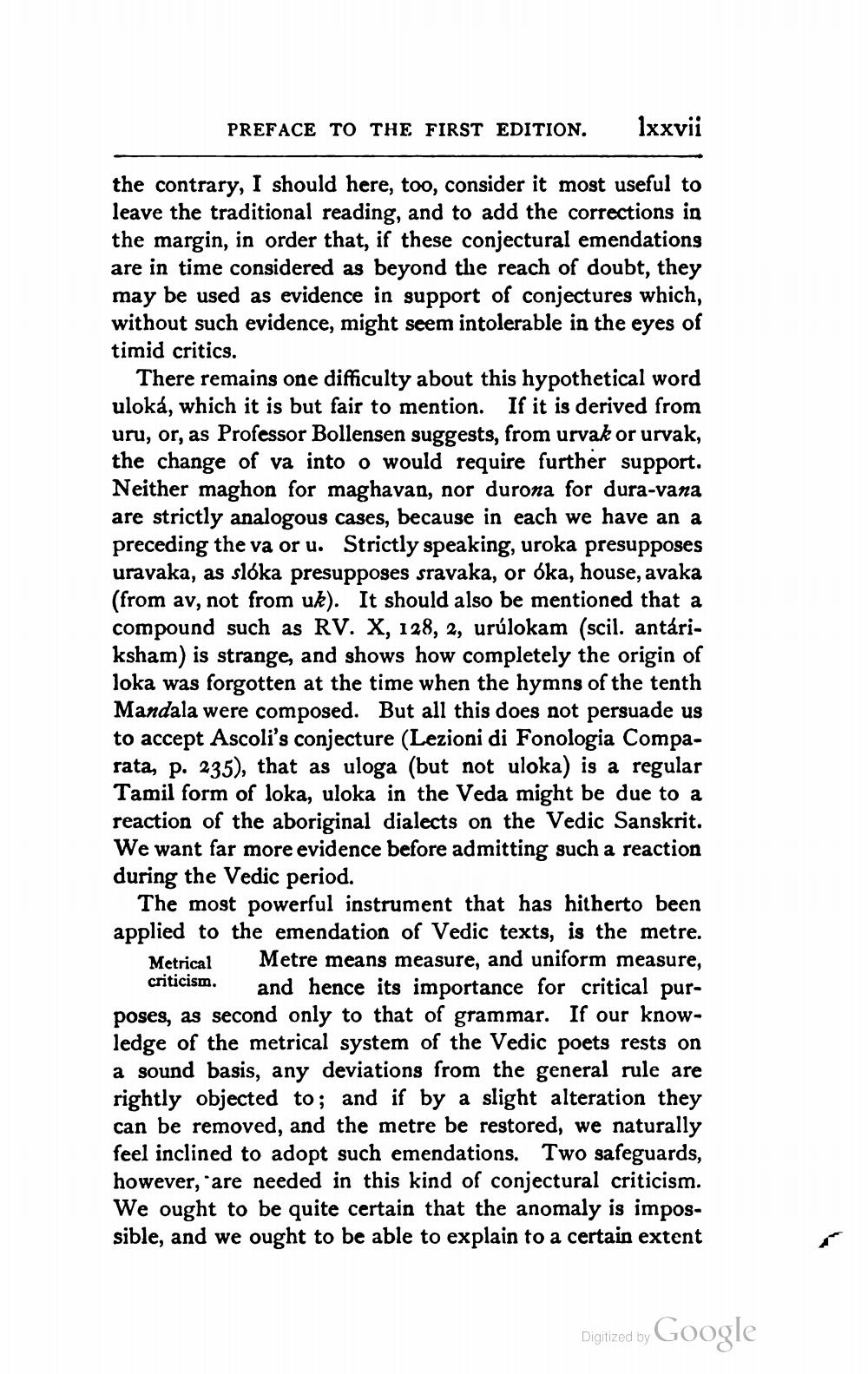________________
lxxvii
the contrary, I should here, too, consider it most useful to leave the traditional reading, and to add the corrections in the margin, in order that, if these conjectural emendations are in time considered as beyond the reach of doubt, they may be used as evidence in support of conjectures which, without such evidence, might seem intolerable in the eyes of timid critics.
PREFACE TO THE FIRST EDITION.
There remains one difficulty about this hypothetical word uloká, which it is but fair to mention. If it is derived from uru, or, as Professor Bollensen suggests, from urvak or urvak, the change of va into o would require further support. Neither maghon for maghavan, nor durona for dura-vana are strictly analogous cases, because in each we have an a preceding the va or u. Strictly speaking, uroka presupposes uravaka, as slóka presupposes sravaka, or óka, house, avaka (from av, not from uk). It should also be mentioned that a compound such as RV. X, 128, 2, urúlokam (scil. antáriksham) is strange, and shows how completely the origin of loka was forgotten at the time when the hymns of the tenth Mandala were composed. But all this does not persuade us to accept Ascoli's conjecture (Lezioni di Fonologia Comparata, p. 235), that as uloga (but not uloka) is a regular Tamil form of loka, uloka in the Veda might be due to a reaction of the aboriginal dialects on the Vedic Sanskrit. We want far more evidence before admitting such a reaction during the Vedic period.
The most powerful instrument that has hitherto been applied to the emendation of Vedic texts, is the metre. Metre means measure, and uniform measure,
Metrical criticism.
and hence its importance for critical purposes, as second only to that of grammar. If our knowledge of the metrical system of the Vedic poets rests on a sound basis, any deviations from the general rule are rightly objected to; and if by a slight alteration they can be removed, and the metre be restored, we naturally feel inclined to adopt such emendations. Two safeguards, however, are needed in this kind of conjectural criticism. We ought to be quite certain that the anomaly is impossible, and we ought to be able to explain to a certain extent
Digitized by Google




